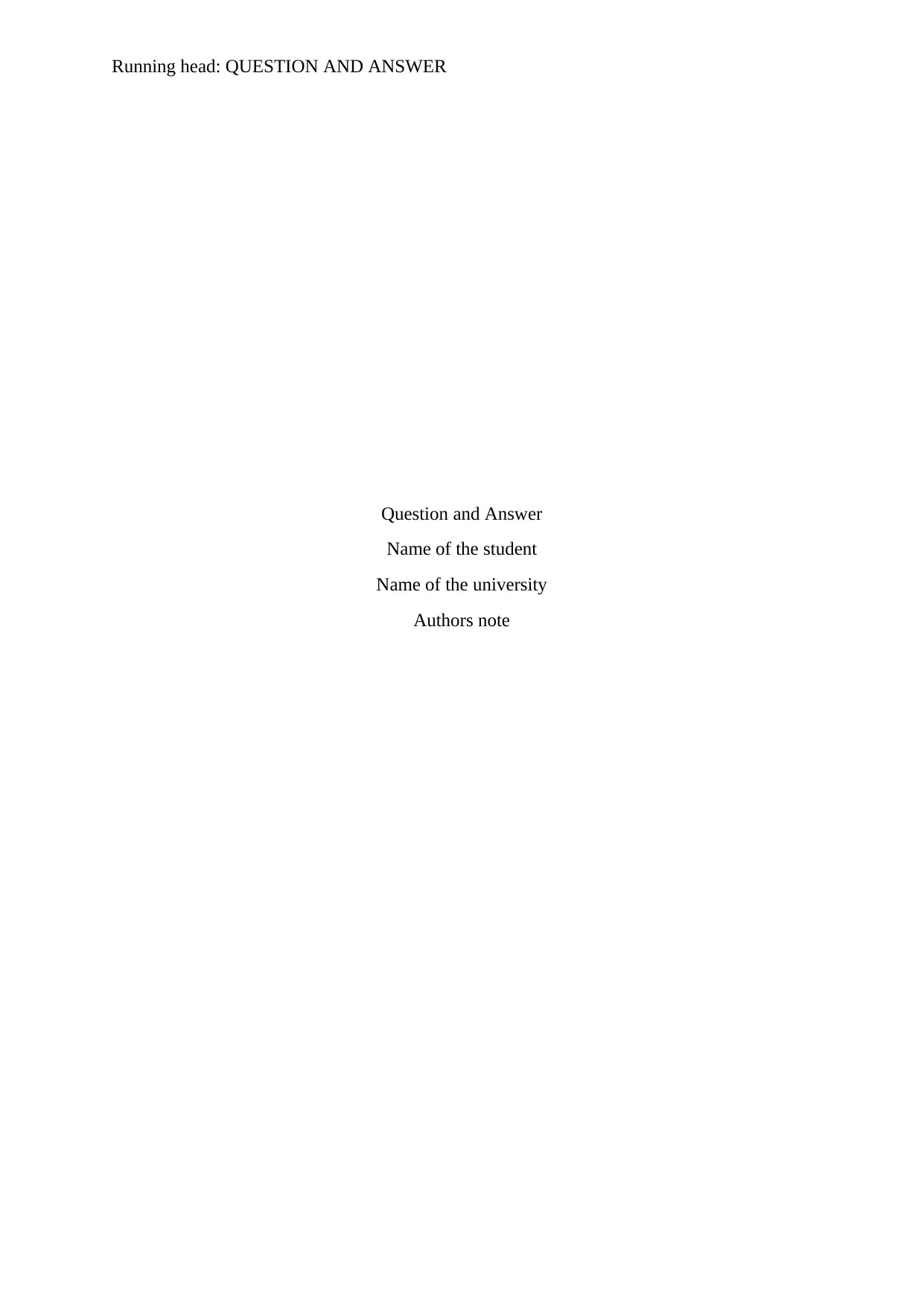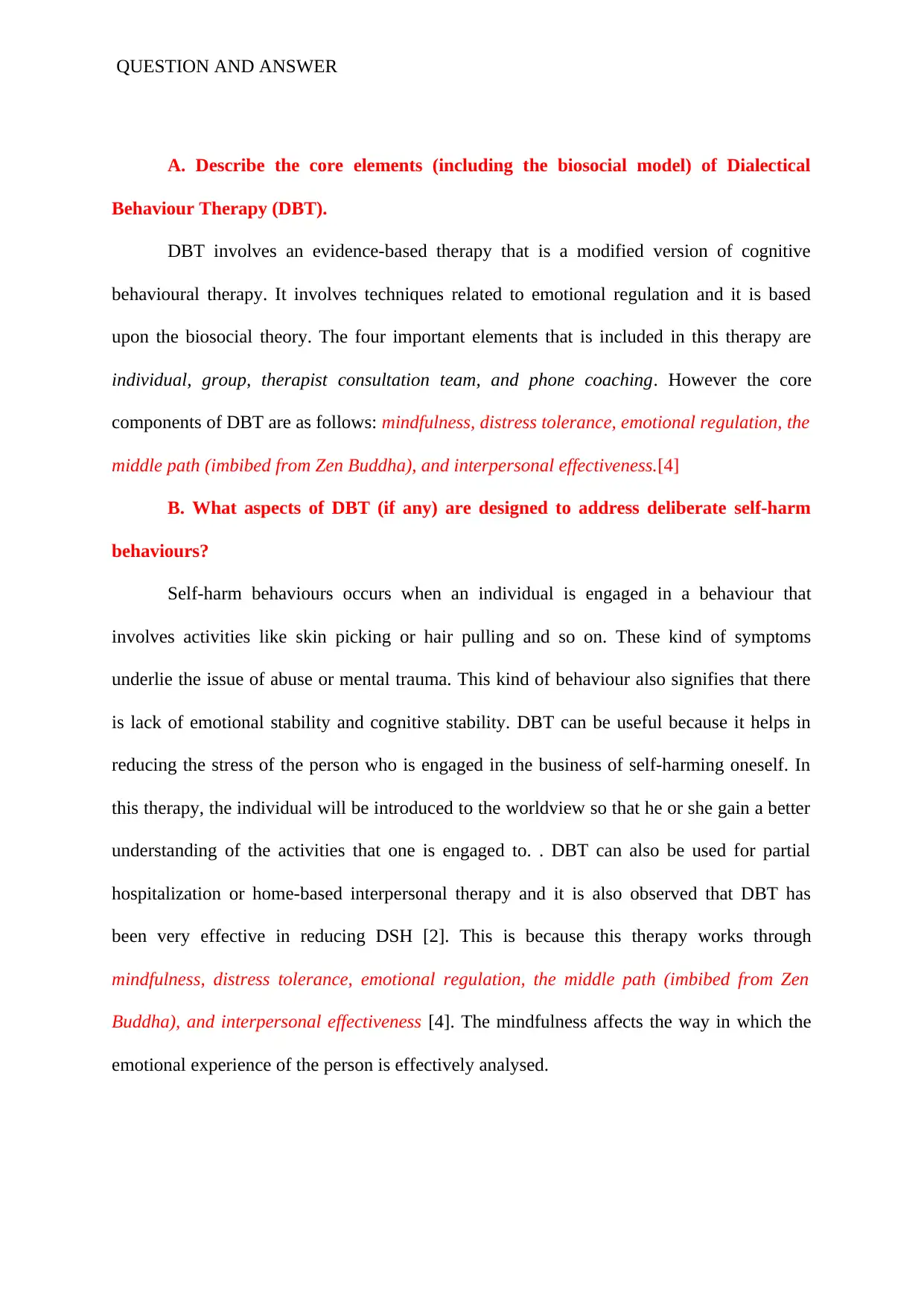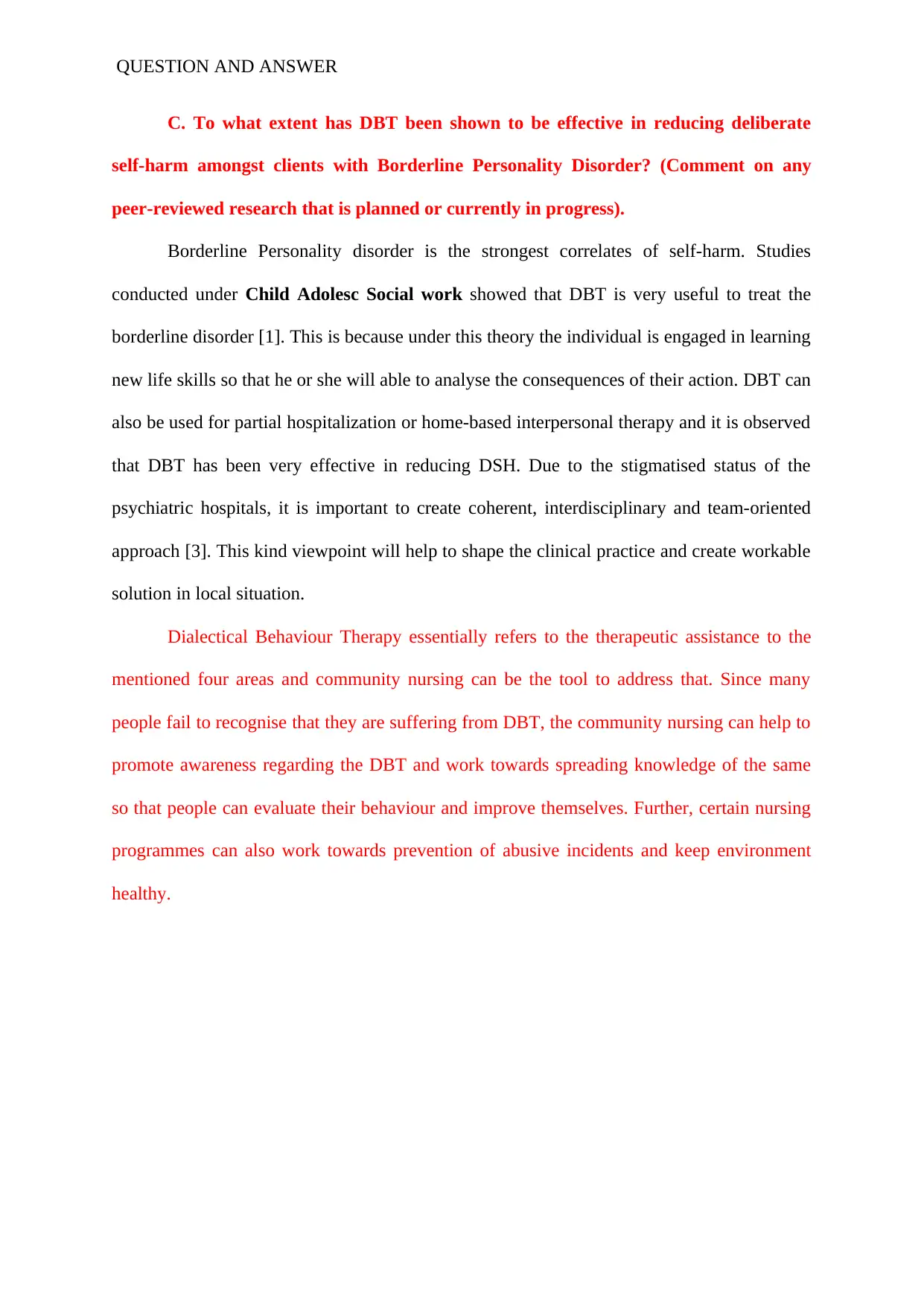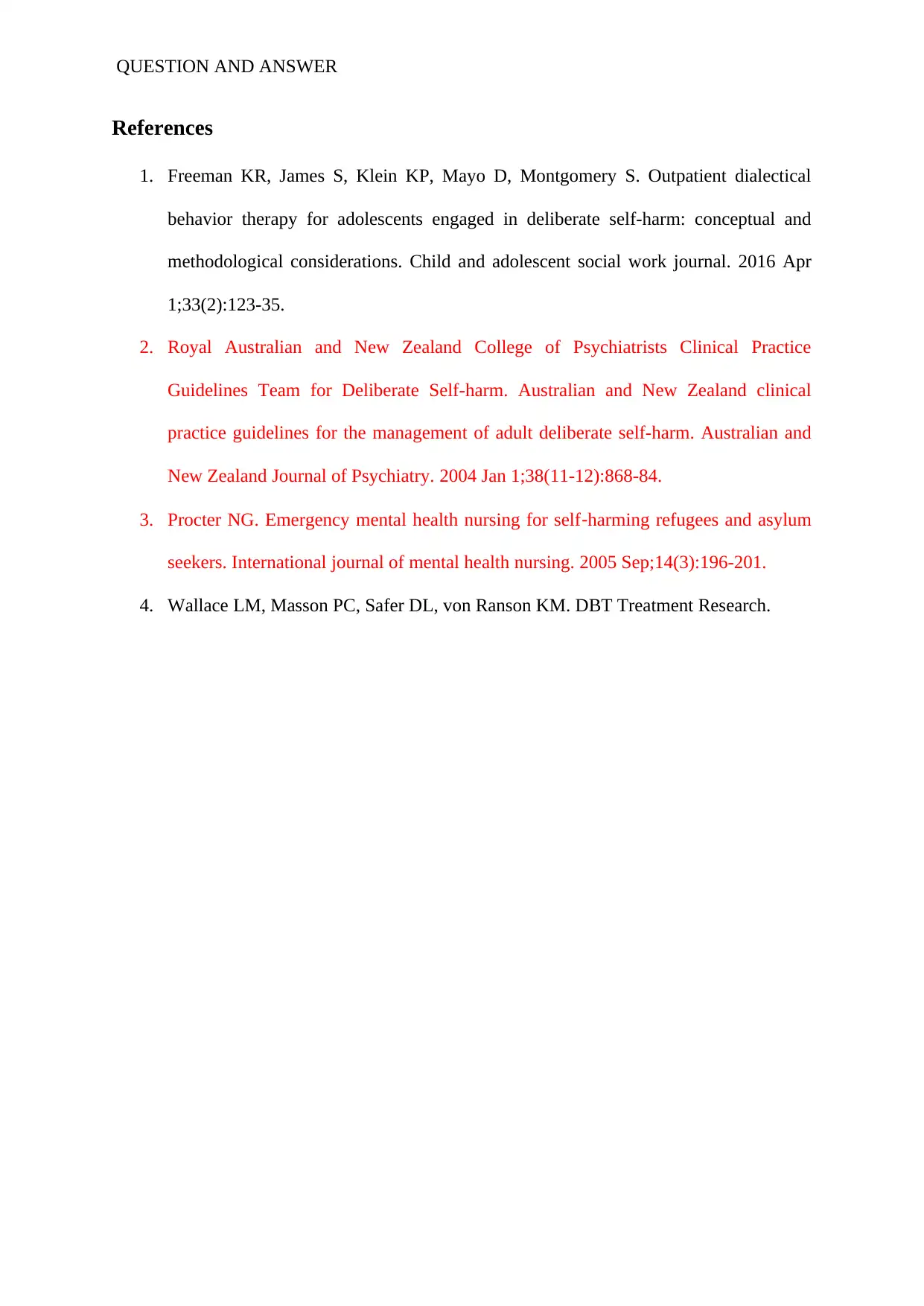MEDI6295 - DBT Effectiveness: Reducing Self-Harm in BPD Clients
VerifiedAdded on 2023/04/10
|4
|638
|429
Homework Assignment
AI Summary
This assignment delves into Dialectical Behavior Therapy (DBT), an evidence-based therapy derived from cognitive behavioral therapy, focusing on emotional regulation and grounded in biosocial theory. It highlights the core elements of DBT, including mindfulness, distress tolerance, emotional regulation, the middle path, and interpersonal effectiveness. The assignment addresses how DBT targets deliberate self-harm (DSH) behaviors by reducing stress and fostering a better understanding of one's actions through mindfulness and emotional regulation. It further evaluates DBT's effectiveness in reducing self-harm among clients with Borderline Personality Disorder (BPD), referencing studies that demonstrate its utility in teaching coping skills and analyzing consequences. The assignment also touches upon the importance of community nursing in promoting DBT awareness and preventing abusive incidents, emphasizing a coherent, interdisciplinary approach to mental health care. Desklib provides access to similar solved assignments and resources for students.
1 out of 4





![[object Object]](/_next/static/media/star-bottom.7253800d.svg)